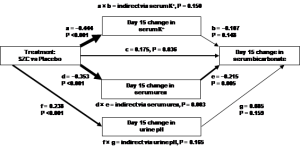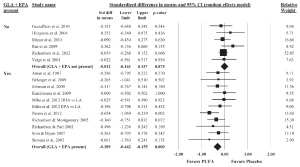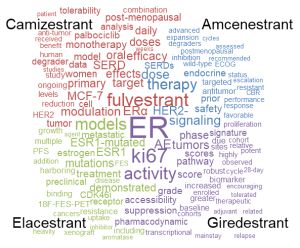Statistical services
Post hoc statistical analysis of clinical trial data, quantitative meta-analysis, and natural language processing
The combined experience of our team in data analysis and medical writing means we can effectively bridge the gap between responding to client/author analysis requests with an appropriate analysis plan AND effectively communicating the analysis results via integrated medical writing. The latter component is often lacking when using third-party statistical vendors.
The following is a non-exhaustive list of analyses for which we have already provided this expertise, with some examples of both the analyses and publications we have developed based upon them.
Core services (click to read more):
Post hoc analyses of clinical trial data or other databases
Post hoc analyses are performed after the main data analyses have been completed to identify other significant relationships in the data that were not specified before the study commenced.

The significant pathway via changes in serum urea supported the hypothesis that SZC also entraps ammonium ions in addition to its primary effect on binding potassium ions in the gut.
Other publications
Meta-analyses
Meta-analysis is a formal method of combining aggregated data from previous studies to calculate a more precise estimate of treatment effect, disease risk, risk of adverse events, or other outcomes, than any individual single study has previously identified.
Example
Puri BK and Martins JG. Which polyunsaturated fatty acids are active in children with attention-deficit hyperactivity disorder receiving PUFA supplementation? A fatty acid validated meta-regression analysis of randomized controlled trials. Prostaglandins Leukot Essent Fatty Acids. 2014;90:179-189. https://doi.org/10.1016/j.plefa.2014.01.004
A meta-analysis of polyunsaturated fatty acid (PUFA) supplementation in children with attention-deficit hyperactivity disorder:

Fig. 2. Forest plot of standardized difference in mean of inattention symptom scores rated by all raters for the 16 studies with available ratings of inattention and grouped by whether GLA and EPA were present in the PUFA regimen. Threshold values of ≥1 mg were used to determine the presence of both GLA and EPA. DHA,docosahexaenoicacid; EPA, eicosapentaenoicacid; GLA, γ-linolenic acid; LA, linoleicacid.
Other publications
Natural language processing: qualitative gap analysis
A gap analysis allows organizations to determine how to best achieve their publication goals. It compares the current scientific communications landscape of the competitive marketplace with an ideal state or goals, which highlights shortcomings and opportunities for improvement. Normally, this involves establishing the publication footprint rather than in-depth analysis of messaging within publications, which is very time consuming using conventional methods. Using natural language processing techniques, such as word clouds, relative word frequency and keywords in context, messaging can be analyzed rapidly and effectively.

Please contact us to discuss your analytic and writing requirements.



